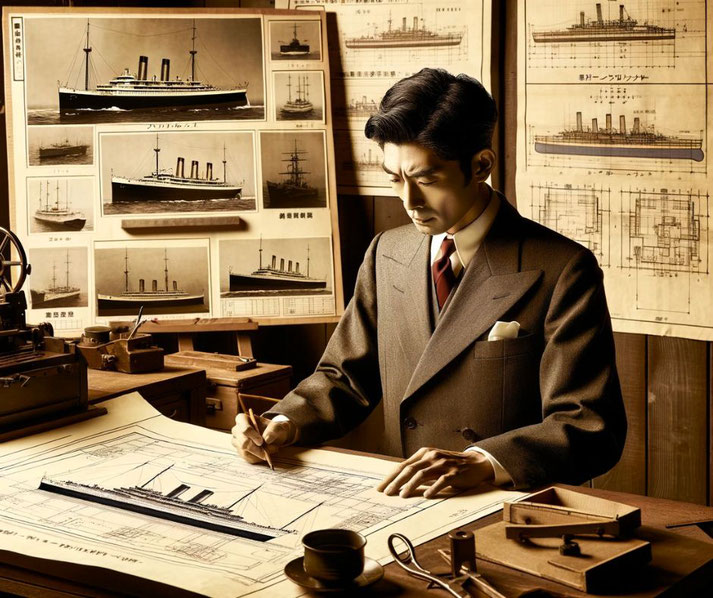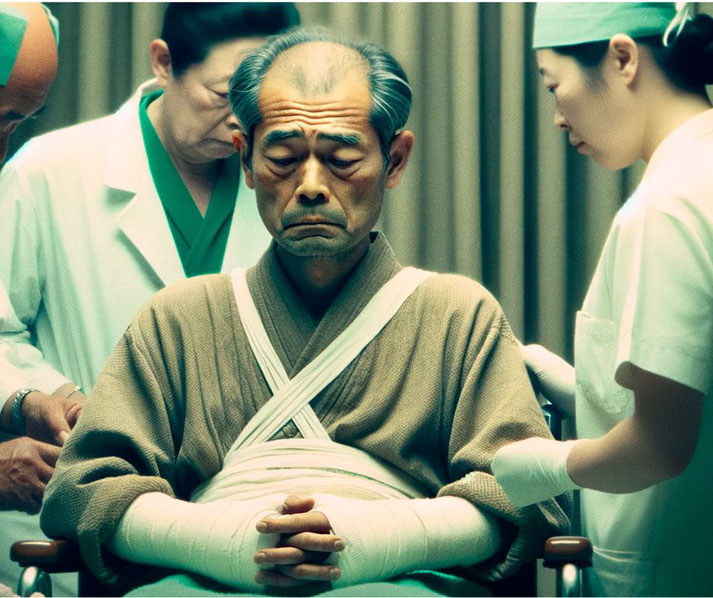The incredible story of the man who survived the bombings of both Hiroshima and Nagasaki

Amidst the devastating backdrop of World War II, one man, Tsutomu Yamaguchi, emerged with a story so extraordinary it defies belief.
He survived the unimaginable: the atomic bombings of both Hiroshima and Nagasaki, a feat unmatched in human history.
This tale of survival against all odds begins on a clear morning in Hiroshima, where Yamaguchi, then a young engineer, experienced the first atomic bomb.
Just days later, in a twist of fate that seems almost scripted, he found himself in Nagasaki, only to witness a second nuclear horror.
But how did he manage to survive both catastrophes?
What were the odds of surviving this double exposure to nuclear devastation?
And how did Yamaguchi's experiences shape his views on war and peace?
His life before World War Two
Tsutomu Yamaguchi was born on March 16, 1916, in Nagasaki, Japan, a time when the country was undergoing significant cultural and political changes.
Growing up, Yamaguchi experienced the intersection of traditional Japanese values with the rapid modernization that characterized early 20th century Japan.
His early life was shaped by the ethos of the Meiji and Taisho eras, periods marked by a move towards industrialization and internationalization.
In this evolving landscape, Yamaguchi pursued his education with a keen interest in technology and engineering.
This passion led him to attend Nagasaki University, where he studied engineering, a field that was gaining prominence in Japan's industrial growth.
His academic prowess and dedication set a strong foundation for his future career.
After completing his education, Yamaguchi began working for Mitsubishi Heavy Industries, a major Japanese industrial firm.
His role at Mitsubishi was significant, as it involved important shipbuilding projects, which were crucial to Japan's expansionist policies at the time.

Why was he in Hiroshima in 1945?
By the 1940s, he had established himself as a skilled engineer, a position that was crucial during a period when Japan's industrial and military might were closely intertwined.
His work primarily involved designing oil tankers, a critical component in supporting Japan's wartime logistics.
At the time, Yamaguchi was married and had a family, with whom he shared a home in Nagasaki.
The war years were difficult for everyone in Japan, and Yamaguchi's family was no exception.
They faced the everyday realities of life during wartime, including shortages and the constant undercurrent of uncertainty and fear.
In the summer of 1945, he was sent to Hiroshima for a three-month business trip.
This trip was part of a project that required his technical expertise.

How he survived the first atomic bombing
On the morning of August 6, 1945, Tsutomu Yamaguchi was preparing to leave the city after completing his three-month assignment for Mitsubishi Heavy Industries.
At approximately 8:15 AM, as he was walking to the shipyard, the first atomic bomb was dropped on Hiroshima.
Yamaguchi was less than three kilometers from the bomb's hypocenter. In an instant, the city was engulfed in a blinding flash of light, followed by an immense explosion.
Yamaguchi recalled the sensation of being lifted and thrown by the blast, a force unlike anything he had ever experienced.
Despite being severely burned, particularly on his upper body and arms, he survived.
The city around him was unrecognizable, reduced to ruins in a matter of seconds.
In the chaos and destruction that followed, Yamaguchi's primary goal was survival and escape.
He spent the night in a shelter, grappling with the shock and trauma of what he had just endured.
Despite his severe burns and the trauma he had just endured, Yamaguchi was determined to return to his family in Nagasaki.
The train services were in disarray, and the routes were cluttered with debris and the remnants of the once-bustling city.
However, he managed to find a working train station on the outskirts of the city, where he was able to find a seat.
Upon arriving in Nagasaki on August 8, Yamaguchi received treatment for his wounds.
His return home was a moment of relief, albeit short-lived. He was back with his family, but the trauma of Hiroshima was still fresh, both in his mind and on his body.
The reality of what he had experienced was difficult to comprehend, even for his family who had not witnessed the events firsthand.
Surviving the bombing of Nagasaki
On August 9, 1945, the day after he arrived back in the city, Nagasaki faced its own nuclear nightmare.
Yamaguchi was in the Mitsubishi Heavy Industries office, already back at work despite his injuries, when the second atomic bomb was dropped.
At approximately 11:02 AM, a second blinding flash and a deafening explosion enveloped the city.
Yamaguchi, already a survivor of the Hiroshima blast, was once again subjected to the horrors of a nuclear explosion.
This time, Yamaguchi was about 3 kilometers away from the bomb's hypocenter.
Despite the distance, the impact was tremendous. The force of the blast, the heat, and the radiation were overwhelming, yet, in an almost miraculous twist of fate, Yamaguchi survived again.
He found himself in a situation eerily similar to that in Hiroshima—surrounded by destruction and chaos, with the city he knew turned to ruins in an instant.
The experience of surviving two atomic bombings was not just a physical challenge but also an immense psychological ordeal.
The shock and trauma were compounded, and the impact was not only on his body but deeply etched in his psyche.
In Nagasaki, he was also faced with the immediate concern for his family's safety.
Fortunately, his family had survived the blast, a small consolation in the midst of overwhelming tragedy.
The long-term health struggles from radiation
Yamaguchi's health was significantly affected by his exposure to the two atomic blasts.
He suffered from acute radiation syndrome, which manifested in symptoms such as hair loss, and the wounds he sustained in Hiroshima took time to heal.
In the years following the war, like many other survivors (known as hibakusha), Yamaguchi experienced chronic health issues, including cataracts and acute leukemia, a common long-term effect of radiation exposure.
Despite these challenges, he continued to work and provide for his family, returning to his position at Mitsubishi Heavy Industries.
Yamaguchi was haunted by the memories of the bombings and the devastation he had witnessed.
However, he did not publicly speak about his experiences for many years, in part due to the stigma and discrimination often faced by hibakusha in Japanese society.
It was a period of internal struggle and reflection for Yamaguchi, as he grappled with his survival and the loss of so many others.
In the decades following the war, Yamaguchi's perspective began to shift, and he became more vocal about his experiences.
He started to see his survival not just as a personal narrative, but as a story with a powerful message for future generations.
He began to share his experiences more openly, contributing to the collective memory and understanding of the atomic bombings.

Yamaguchi's death and legacy
Tsutomu Yamaguchi passed away on January 4, 2010, at the age of 93. His death marked the end of a life that had been extraordinarily shaped by some of the most pivotal events of the 20th century.
Yamaguchi's passing was widely covered in the media, bringing to light once again the unique story of a man who had survived both atomic bombings in Japan.
His story continued to resonate with people around the world, serving as a stark reminder of the devastating impact of nuclear weapons.
He had become a symbol of peace and resilience, a voice that had risen from the ashes of Hiroshima and Nagasaki to advocate for a world free of nuclear arms.
His experiences, as retold in interviews, talks, and in his book, "Twice Bombed, Twice Survived," have been a source of inspiration and a point of reflection for many.
His account provides a human face to the tragedies, encapsulating the suffering, survival, and the message of hope and peace.
The unique nature of his experience has also sparked discussions and research into the health effects of radiation exposure, contributing to a deeper understanding of the long-term consequences of nuclear bombings.
What do you need help with?
Download ready-to-use digital learning resources
Copyright © History Skills 2014-2024.
Contact via email
With the exception of links to external sites, some historical sources and extracts from specific publications, all content on this website is copyrighted by History Skills. This content may not be copied, republished or redistributed without written permission from the website creator. Please use the Contact page to obtain relevant permission.





